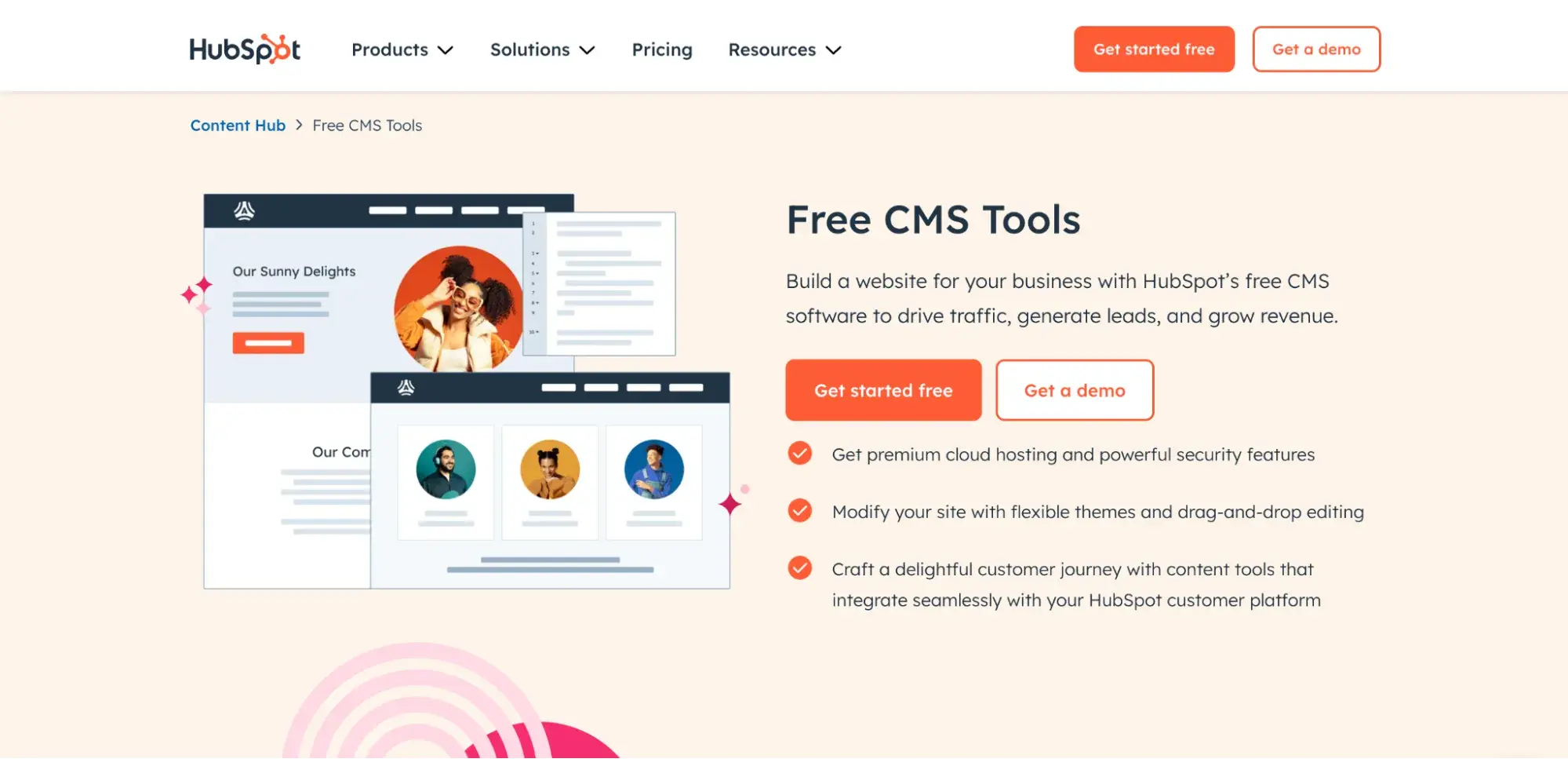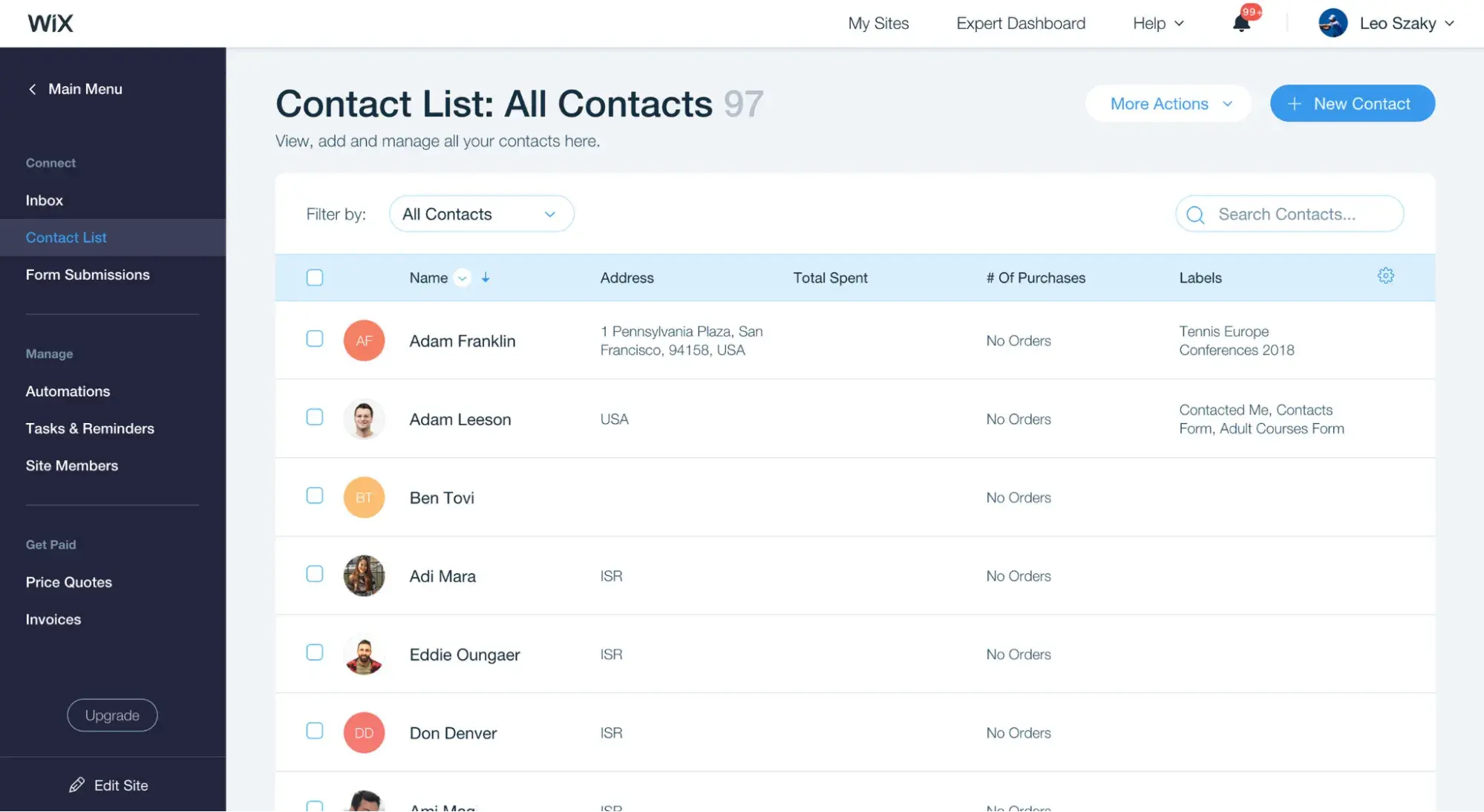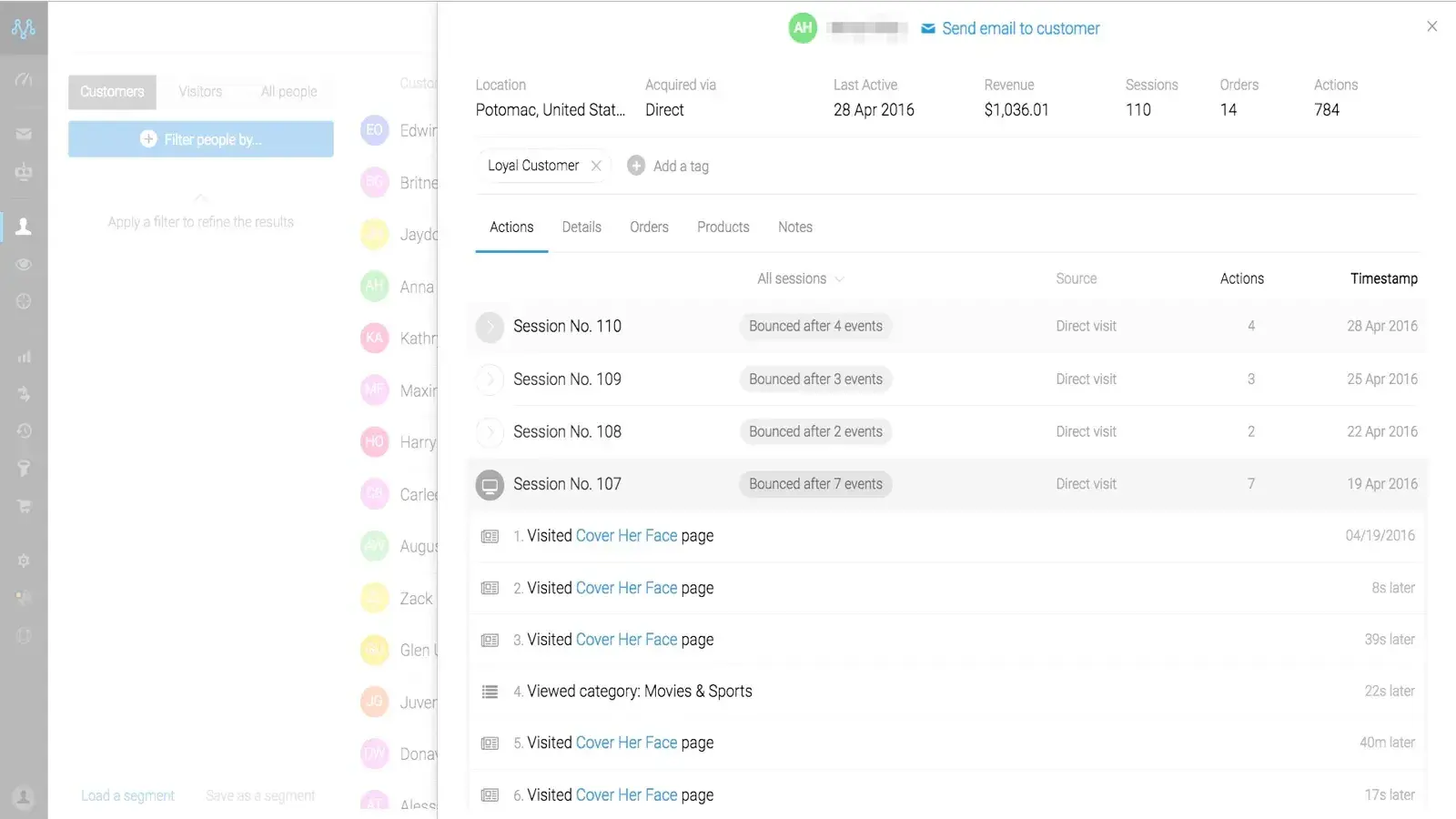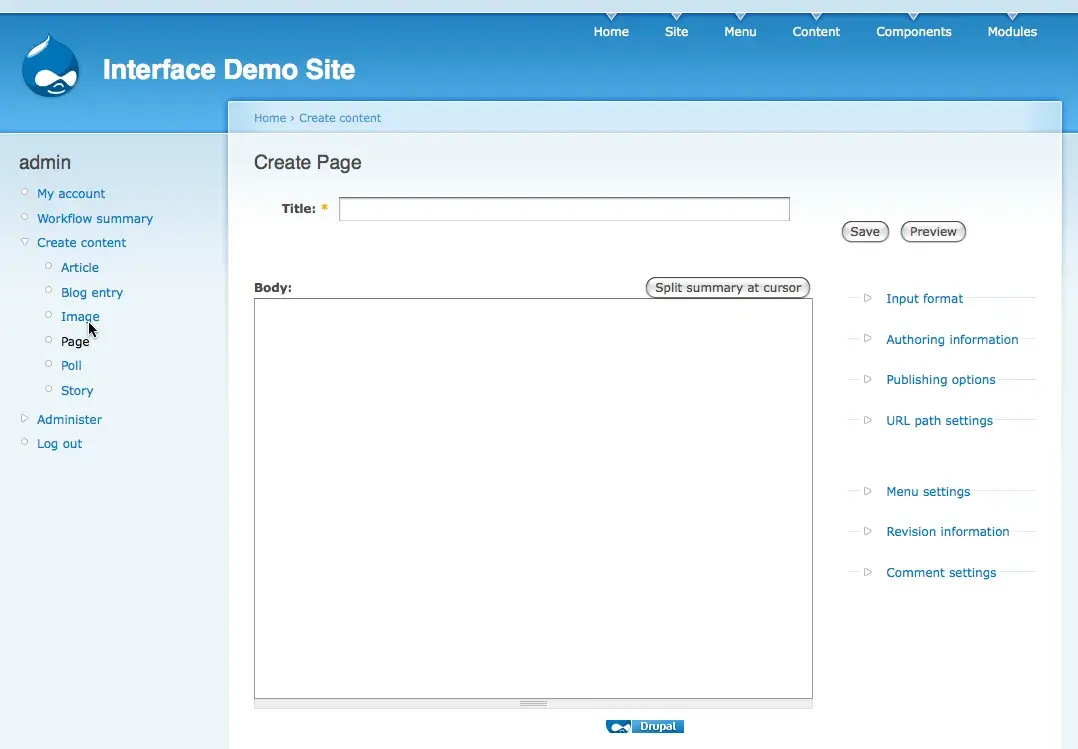Table of Contents
- CRM vs. CMS
- Core Features of CRM and CMS
- Benefits of CMS-CRM Integration
- How to Integrate Your CMS With a CRM
- Top CMSs and CRMS
CRM vs. CMS
CRM and CMS are software tools for online businesses. Customer relationship management software (CRM) keeps track of all your leads and customers by recording and reporting their interactions with your website. A content management system (CMS) is used for building and managing a website.
Put another way, a CMS helps you create an experience for visitors, while a CRM helps track visitor experience. In the digital space, though, you’ll often find that your CMS and CRM overlap. Let’s take a look at some of the similarities between the two systems.
Similarities Between CMS and CRM
If you’re looking for a CMS and a CRM, you’ll find some software that offers everything you need as an all-in-one solution. This means you’ll have access to:
- Content management tools.
- Publishing and SEO tools.
- Analytics and tracking.
- Ecommerce storefronts.
If you run a small business, like an online shop for your digital products, you can easily do all the things you need for your business within one of these platforms. Your small team might focus more on marketing your products through content marketing instead of other marketing tactics like cold calling or following up with leads. If that’s how you run your business, a CMS is useful.
That said, if you operate a brand with sales and customer experience teams to help with outreach and lead generation, I think you’ll find having two systems, a CRM and a CMS, beneficial.
Differences Between a CRM and a CMS
To explain the differences between a CRM and CMS and why you might need both, I find it helpful to paint a picture. Imagine with me for a moment that you’re standing inside your favorite store.
If you look around, you’ll notice the retailer has custom lighting, paint, accent details, and in-store advertisements and content. Think of this as the CMS at work. Each strategic element of the store works in unison to give you a customized shopping experience. A CMS in the digital landscape does the same thing — it helps you easily customize your web pages for a better user experience.
Now, imagine looking around at the sales associates, how they do their jobs, and the tech they use. This is the CRM in action.
The CRM supports the sales operations that help drive revenue. In the digital space, this tool helps your associates find new leads and close deals. It’s also a system designed to make sharing notes between employees and monitoring analytics easier.
So, to recap, the differences between a CRM and a CMS are:
- Functionality. CRMs help support sales operations. CMSs help customize the web experience.
- Users. CRMs are useful for customer-facing roles, like sales and customer support. A CMS is helpful for marketing teams.
Core Features of CRM and CMS
Depending on the size of your business and your specific operations, you might need both of these systems to keep your operations moving in the right direction. Let’s unpack what each does on its own by looking at the core features.
Key CRM Features
Organizations use CRM software to track how every lead and customer interacts with their online business. To support your goals, most CRMs include the following.
Contact Management Tools
CRMs store contacts as records, each containing relevant customer information like name, company name, and contact information. With this information logged, sales teams can understand each lead and customer journey at a glance and view overall customer patterns in bulk.
Customer records also keep track of the relationship between sales representatives and customers. Every interaction — email, phone call, meeting, etc. — is stored in the CRM so sales reps know when to follow up with individual prospects.
CRMs also allow users to segment customers into lists by criteria like location, company type, or company size. I think this paints a clear picture of your customer base and helps reps tailor their sales strategies to specific segments.
Automated Data Capture
In my opinion, one major benefit of CRM software is its ability to automatically log communications between contacts and sales reps. Rather than copy-pasting phone numbers, meeting times, emails, and form responses into your system, an integrated CRM takes care of this on its own, eliminating a huge source of friction for your team.
Deal Tracking
Your CRM should have a way to track where each contact currently sits in the sales process, and this information is stored in the contact record. As contacts progress along the buyer’s journey, the CRM lets reps update the deal stage, or the stage is bumped up automatically.
Content Repository
CRMs allow for the creation of a content repository that contains templates for prospect communications to help close more deals. Reps can create templates for emails, forms, and more, which helps standardize the sales process and saves time spent writing individual communications.
Reporting
Finally, a capable CRM needs to aggregate your sales data into digestible reports so that you and your sales team can extract trends and insights. Reports also help your sales team stay on track with their sales goals and hit quotas. In a CRM, reports can be generated for contacts, segments, or your entire organization’s performance over a specified period.
Key CMS Features
If your CRM is your customer management hub, your CMS is your website hub. Organizations use a CMS to build and manage their ever-evolving online presence, with help from the following features.
Content Management Tools
Most popular CMSs comprise two systems under one piece of CMS software: A content management back end and a content publishing front-end.
A CMS back end handles everything related to storing and organizing your digital assets. It provides an interface for you to browse your content and pick items to put on your front-end. Some tools also let you edit your content directly with a rich editor before placing them on a page.
Publishing Tools
All CMSs have an interface for publishing content to your website (and possibly other digital channels, like mobile applications). Front-end tools allow you to arrange your content on pages for the best possible display.
Depending on the CMS and extensions you add, your publishing tool might be bare-bones and code-based, or it may incorporate a WYSIWYG editor (short for “what you see is what you get”). A WYSIWYG editor lets you edit pages without writing code, often via a drag-and-drop interface.
I suggest checking to make sure your CMS allows you to preview your published content before taking it live. You should also be able to schedule your pages for publishing.
Themes and Templates
A theme determines the look of a website, including its colors, fonts, and layouts. Themes may also include specialized widgets to enhance your site’s functionality. Themes can usually be downloaded and purchased from an online marketplace, though some might come with your CMS.
Not to be confused with a theme, a template is a single-page layout (often offered within a theme) that is pre-built for a specific type of page. Rather than constructing a web page from scratch, users can instead employ templates for homepages, landing pages, product pages, blog posts, and more.
Importantly, I think themes and templates should be responsive, meaning their layouts change in response to different screen sizes on desktop, mobile, and tablet devices.
Analytics
On top of letting you manage and publish content online, CMSs often include analytics tools to track key performance indicators like traffic, page views, bounce rates, devices used, and location. These metrics can be compiled into a dashboard view so you can gain a clear overall picture of your site’s health. If your CMS doesn’t have built-in analytics, I recommend making sure it integrates with a third-party tool like Google Analytics.
SEO Tools
A quality CMS won’t just let you run a website — it will help you get your website in front of more people. Through native tools or extensions, a CMS enables you to create XML sitemaps, add 301 redirects, boost website performance, and optimize your pages’ metadata.
Blogging Tools
Built-in blogging tools, including page templates and content editors, make it easy for any online business to start publishing right away to support their content marketing efforts. In fact, WordPress, the most popular CMS, began as and remains largely known as a CMS for bloggers.
Extensions
No one CMS can cover every possible website need, which is why we have extensions. From enabling ecommerce and membership functionality to bettering SEO to enhancing the user interface, these software add-ons handle all functionality your website needs, but your CMS won’t provide it by itself.
Benefits of CMS-CRM Integration
The title of this article might read “CRM vs CMS,” but I think there’s actually no competition here — these tools should work closely in conjunction with each other. Since your customers interact with your website, your customer tracking system needs to interact with your website management system.
Here are three benefits.
1. Funnel activity from your CMS to the CRM.
A good CMS-CRM integration will funnel all activity on your website straight into your CRM for instant analysis, reporting, and actionable insights. You’ll also be able to see how your site is performing alongside your other online channels, which better informs your marketing and content strategy.
2. Automate certain tasks.
Integrating your CRM with your CMS can save your employees valuable time. Some tasks, like follow-ups, can be automated.
This is particularly helpful for your sales team. Once a lead has entered their contact information in a lead magnet, your CRM can help schedule and automate the follow-up, making it much easier for your sales team to keep track of leads.
3. Optimize your marketing strategies.
Content marketing is a necessary part of your overall marketing strategy. But how do you know you’re creating content your audience wants to read and, more importantly, needs? By monitoring user behavior within your CRM and CMS.
The insights you gather from user behavior can help you create better, more impactful content. Effective content helps with your search engine ranking, too, keeping the SEO wheel turning favorably in your direction.
In the next section, I’ll explain the steps you need to take to integrate your CMS with a CRM. But before we continue, see our CRM guide and CMS guide if you want to learn more about either individual tool.
How to Integrate Your CMS With a CRM
Integrating your CMS and CRM is a smart move. I’ve found it helps streamline your operations, keeps your teams on the same page, and helps you monitor lead activity.
However, merging your systems can be a challenge. Follow these steps to reduce some of the friction.
1. Identify your data points.
It’s no secret: Your CRM and CMS generate a ton of data. While sharing data across your departments is vital to successful marketing and sales operations, some of the data you collect isn’t beneficial for individual departments.
Take some time to identify which data points are the most useful for your teams. You’ll want to include data that speaks to user behavior on your website, like conversion rates and how long a lead spends on your web page. You’ll also want to include data from your sales funnels.
Identifying your data points will help make your CRM-CMS integration easier.
2. Pick an integration method.
There are a couple of ways to integrate your CRM and CMS. You can integrate by:
- Using an API.
- Implementing middleware to act as a bridge between your CRM and CMS.
- Hiring a web developer to build and work with your systems, so you don’t have to.
If you’re unsure which method is best for you, contact your IT department. They’ll be able to help you pick the best approach.
3. Plan and implement the integration.
If I’ve learned anything in life, it’s this: If something can go wrong, it usually will. That’s why having a plan is important.
Before you give the go ahead to integrate your CRM and CMS, take a look at your calendar and plan “Integration Day.” You can help mitigate potential issues by scheduling your integration at a time when it will be the least disruptive to your operations.
You might find scheduling your integration for after normal work hours to be best, or you might schedule it over a holiday break. Either way, look for a time when most of your employees will be out of your systems and plan your integration then.
4. Test it.
When I worked in the state government, I had the opportunity to be a super-user before my office launched a new data management system. As a super-user, it was my job to explore the system before other users and find any sticking points that might cause friction.
Before you make your CRM-CMS available to all of your employees, follow the advice of my office: identify super-users. They can help you test your systems to make sure everything is functioning properly.
5. Monitor, monitor, monitor.
Once your integration is complete, there’s still work to do. You’ll need to continuously monitor your systems to get the most out of them for your business. As your employees and potential leads interact with your CRM-CMS, you’ll identify opportunities to better optimize your processes.
Top CMSs and CRMS
If you’re in the market for a CMS, consider the available CRM integrations for each one on your list. Just about every well-known CMS will work with one or more CRMs, but the integration processes differ in cost, functionality, and options available. Be mindful of which CMS-CRM setup will work best overall for your business.
Alternatively, if you’ve already settled on a CMS but are unhappy with the CRM options available to you, don’t be afraid to switch to a CMS with a more effective CRM integration. The effort spent to switch your CMS will be more than made up for by customers earned through a better CRM.
I’ll share some of the best CMSs available and how to pair them with an effective CRM.
1. Content Hub
Content Hub is built on top of HubSpot CRM, giving you access to tools for lead capture, contact management, and analytics in the same place as your content management system. Every interaction on your Content Hub website is stored in the CRM for easy reporting. New leads from your website are also automatically saved in your CRM as contacts, which you can organize into lists and easily track from first interaction to purchase.
Content Hub and HubSpot CRM keep things simple yet powerful. With these tools fully integrated into a single platform, you’ll spend less time trying to sync up software tools and more time optimizing your customer experience, nurturing leads, and growing your online business.

2. WordPress
Adding a CRM to your WordPress website is as simple as installing a CRM plugin. Add-ons like the HubSpot WordPress plugin seamlessly sync WordPress with a CRM, no coding required.
The HubSpot WordPress plugin connects your website with HubSpot CRM, which works to capture your visitor information, organize it into self-updating contact lists, and review your sales metrics with reports. HubSpot CRM easily integrates with other apps like WooCommerce, Stripe, and Gmail.

For more CRM options, check out our list of our favorite CRM plugins.
3. Wix
Wix has made a name for itself in the CMS space with its ease of use, which extends to its CRM as well. To add CRM capabilities to your Wix site, use Wix’s customer management and marketing suite, Ascend.
The Ascend CRM blends into Wix’s CMS interface, so you can quickly add its suite of user-friendly business tools to your workflow. These tools include essential CRM functionality, marketing integrations with Google Analytics and Facebook Pixel, and custom templates for automated email, social media posts, and video.

4. Shopify

Customer relationship management is an essential component of any ecommerce business, including those using Shopify. Shopify easily integrates with third-party CRM software available from its marketplace. Browse for CRM integrations in the Shopify app store, or pick one of my recommendations:
- HubSpot CRM. HubSpot CRM is one of the top Shopify-compatible CRMs and hands-down the best free CRM available. I like that it offers features to create deep connections with leads and customers, including personalized CTAs and email nurturing, content engagement tracking, and extensive integrations with other popular marketing and sales tools.
- AgileCRM. If you’re running a small ecommerce business, AgileCRM is a great option to start and grow with. Its all-in-one functionality handles operations for contact management, sales, marketing, and customer support, all for a competitive price compared to other CRM apps.
- Metrilo. Metrilo’s CRM app for Shopify emphasizes its in-depth segmentation of customers with advanced activity tracking, detailed customer profiles, and its highly customizable filtering tool. Its range of pricing plans is aimed at fitting your business’s needs, regardless of size.
5. Joomla

As the second most popular open-source CMS on the market, Joomla allows room for broad customization with extensions, including some reputable CRM integration options. Some popular Joomla CRM extensions include:
- JoomCRM. As the leading Joomla CRM extension, JoomCRM offers CRM features for contact and deal management, team management, lead capture, and more. I think it’s a great place to start.
- vBizz. For a broader business solution with CRM included, try the Joomla vBizz extension. It offers powerful and flexible business management features, including customer relationship solutions for project planning, activity tracking, communicating with leads, and analytics.
- CiviCRM. CiviCRM is designed specifically for nonprofit websites. This extension empowers users to build strong relationships with funders and partners. Its specialized tools facilitate donation collection, event management, and site membership.
6. Drupal

To add a CRM with Drupal, you can choose from a few well-reviewed CRM modules. Drupal is more hands-on than other CMSs, so expect a more involved process to link a CRM to your site. I recommend trying out these modules for Drupal:
- HubSpot. The Drupal HubSpot module uses HubSpot’s API to sync your Drupal site with HubSpot’s tools, including HubSpot CRM. Users can fill out forms on your Drupal site with their information, which is then stored in HubSpot’s system.
- AgileCRM. Agile’s powerful CRM module can integrate with your Drupal site without much heavy lifting, letting you quickly add landing pages and forms to your pages, automate emails, and track visitor engagement.
- RedHen. This open-source CRM accommodates the core CRM needs of nonprofit organizations: contact management, engagement tracking, event registration, and member profiles. RedHen is built for Drupal. This allows for lightweight customization and backend access for those more comfortable with code.
CMS and CRM: The Ultimate Duo
There’s a lot to consider while growing a business online. It’s easy to become overwhelmed by the many different software products marketed under the guise of “essential” or “must-have.”
But, I think implementing a healthy CMS-CRM relationship at the heart of your strategy will ultimately save you time, money, and lost leads. The sooner you do this, the sooner you’ll understand your audience and leverage your insights to earn their trust.
Editor's note: This post was originally published in July 2020 and has been updated for comprehensiveness.
Content Management System








![20 Best Membership Website Builders and Platforms [+My Favorite Examples]](https://53.fs1.hubspotusercontent-na1.net/hubfs/53/14%20Best%20Membership%20Website%20Builders%20and%20Platforms%20in%202022%20%5B+%20Website%20Examples%5D.png)



